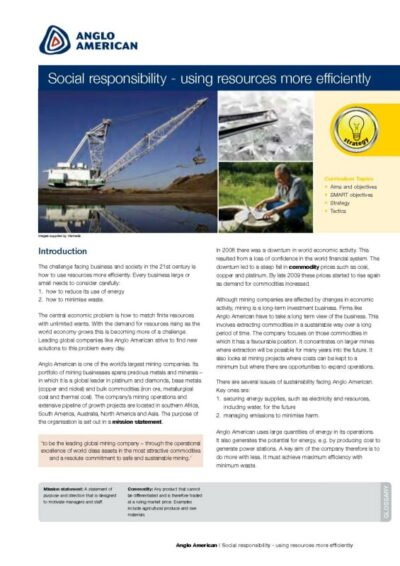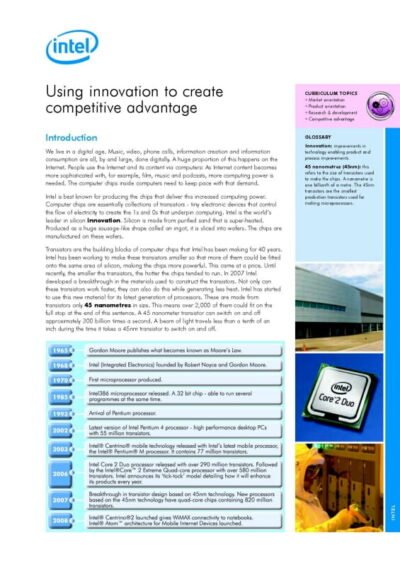In the realm of product development, a product roadmap serves as a strategic tool that outlines the vision, direction, and progress of a product over time. It is not merely a list of features or tasks; rather, it encapsulates the overarching goals and milestones that guide a product’s evolution. A well-constructed roadmap provides clarity and focus, ensuring that all stakeholders are aligned with the product’s objectives.
It acts as a visual representation of the product strategy, enabling teams to communicate effectively about what is being built, why it is being built, and when it is expected to be delivered. The significance of a product roadmap extends beyond mere planning; it is an essential element in fostering collaboration among cross-functional teams. By providing a shared understanding of priorities and timelines, a roadmap helps to mitigate misunderstandings and misalignments that can arise during the development process.
As organisations strive to innovate and respond to market demands, the product roadmap becomes a living document that evolves alongside the product itself, reflecting changes in strategy, customer feedback, and competitive dynamics.
Summary
- A product roadmap is a strategic document that outlines the vision, direction, and goals for a product over time.
- The purpose of a product roadmap is to align stakeholders, communicate the product strategy, and provide a clear plan for product development.
- Key components of a product roadmap include goals, initiatives, timelines, and dependencies.
- Creating a product roadmap involves gathering input from various stakeholders, prioritizing features, and mapping out a timeline for development.
- Communicating the product roadmap is essential for ensuring alignment and buy-in from all stakeholders involved in the product development process.
The Purpose of a Product Roadmap
The primary purpose of a product roadmap is to serve as a strategic guide for product development. It articulates the vision and goals of the product, ensuring that all team members are working towards a common objective. By outlining key initiatives and timelines, the roadmap helps to prioritise tasks and allocate resources effectively.
This prioritisation is crucial in an environment where competing demands can easily derail progress. A well-defined roadmap allows teams to focus on delivering value incrementally while maintaining alignment with the broader business strategy. Moreover, a product roadmap acts as a communication tool that bridges the gap between various stakeholders, including product managers, developers, marketing teams, and executives.
It provides a framework for discussing priorities and trade-offs, facilitating informed decision-making. By clearly articulating the rationale behind certain features or initiatives, the roadmap fosters transparency and accountability within the organisation. This clarity not only enhances team morale but also builds trust among stakeholders who rely on the roadmap to understand the product’s trajectory.
Key Components of a Product Roadmap
A comprehensive product roadmap typically comprises several key components that together provide a holistic view of the product’s direction. One of the most critical elements is the vision statement, which succinctly captures the long-term aspirations for the product. This vision serves as a guiding star for all subsequent decisions and initiatives, ensuring that every feature or enhancement aligns with the overarching goals.
Another essential component is the timeline, which outlines when specific features or milestones are expected to be delivered. This timeline can vary in granularity, from high-level quarterly goals to detailed monthly sprints, depending on the organisation’s needs and development methodology. Additionally, a roadmap should include prioritised initiatives or features that are aligned with customer needs and market trends.
These initiatives should be backed by data and insights gathered from user research, competitive analysis, and stakeholder feedback. Furthermore, metrics for success are vital in assessing progress against the roadmap. These metrics can include user engagement levels, revenue targets, or customer satisfaction scores.
By establishing clear criteria for success, teams can evaluate whether they are on track to meet their goals and make necessary adjustments along the way. Ultimately, these components work together to create a dynamic roadmap that evolves in response to changing circumstances while remaining focused on delivering value.
Creating a Product Roadmap
The process of creating a product roadmap involves several critical steps that require collaboration and input from various stakeholders. Initially, it is essential to gather insights from customers, market research, and internal teams to identify pain points and opportunities for improvement. This information serves as the foundation for defining the product vision and strategic objectives.
Engaging with customers through surveys, interviews, or usability testing can provide invaluable insights into their needs and preferences. Once the vision is established, prioritising features becomes paramount. This can be achieved through various frameworks such as the MoSCoW method (Must have, Should have, Could have, Won’t have) or the RICE scoring model (Reach, Impact, Confidence, Effort).
These frameworks help teams evaluate potential initiatives based on their value to customers and alignment with business goals. After prioritisation, it is crucial to develop a timeline that reflects realistic delivery expectations while considering resource availability and dependencies. Collaboration tools such as Trello, Jira, or Aha!
can facilitate the creation of visual roadmaps that are easily shareable among team members. These tools allow for real-time updates and adjustments as new information emerges or priorities shift. Regularly revisiting and refining the roadmap ensures that it remains relevant and actionable in an ever-changing landscape.
Communicating the Product Roadmap
Effective communication of the product roadmap is vital for ensuring that all stakeholders are aligned and informed about the product’s direction. The first step in this process is identifying the audience for the roadmap presentation. Different stakeholders may require varying levels of detail; for instance, executives may prefer high-level summaries focusing on strategic objectives, while development teams may need granular details about specific features.
Utilising visual aids such as charts, graphs, and timelines can enhance understanding and engagement during presentations. A well-designed visual representation of the roadmap can make complex information more digestible and highlight key milestones effectively. Additionally, storytelling techniques can be employed to convey the rationale behind certain decisions or priorities, making it easier for stakeholders to grasp the bigger picture.
Regular updates are also essential in maintaining stakeholder engagement with the roadmap. Scheduling periodic reviews or check-ins allows teams to share progress, celebrate achievements, and discuss any changes in direction. This ongoing dialogue fosters a culture of transparency and collaboration within the organisation, ensuring that everyone remains invested in the product’s success.
The Importance of Product Roadmap in Product Development
Clarity and Focus in Fast-Paced Environments
By providing clarity on priorities and timelines, it enables teams to focus their efforts on delivering value incrementally rather than becoming overwhelmed by competing demands. This focus is particularly crucial in fast-paced environments where agility is paramount.
Mitigating Risks and Enhancing Project Outcomes
Moreover, a well-defined roadmap helps to mitigate risks associated with product development by allowing teams to anticipate challenges and plan accordingly. For instance, if certain features are identified as high-risk due to technical complexity or market uncertainty, teams can allocate additional resources or adjust timelines to address these concerns proactively. This foresight not only enhances project outcomes but also instils confidence among stakeholders who rely on the roadmap for guidance.
Fostering Alignment and Collaboration
Additionally, a product roadmap fosters alignment across cross-functional teams by providing a shared understanding of goals and priorities. When everyone is on the same page regarding what needs to be accomplished and why it matters, collaboration becomes more effective. Teams can work together seamlessly towards common objectives rather than operating in silos with disparate agendas.
Using a Product Roadmap for Stakeholder Alignment
A product roadmap plays a pivotal role in aligning stakeholders around a shared vision for the product. By clearly articulating goals, priorities, and timelines, it serves as a reference point for discussions among diverse groups such as marketing, sales, customer support, and engineering teams. This alignment is particularly important in larger organisations where multiple departments may have differing perspectives on what constitutes success.
One effective approach to fostering stakeholder alignment is involving representatives from various functions during the roadmap creation process. By soliciting input from different perspectives early on, teams can ensure that all voices are heard and considered in shaping the product’s direction. This collaborative approach not only enhances buy-in but also helps identify potential conflicts or dependencies that may arise later in development.
Furthermore, regular communication about updates or changes to the roadmap reinforces alignment over time. As market conditions evolve or customer feedback emerges, adjustments may be necessary to keep the product on track. By transparently sharing these changes with stakeholders and explaining their rationale, teams can maintain trust and commitment among all parties involved.
The Role of Product Roadmap in Agile Development
In Agile development environments, where flexibility and responsiveness are paramount, a product roadmap serves as both a guiding framework and an adaptable tool for managing change. While Agile methodologies emphasise iterative development and continuous feedback loops, having a high-level roadmap provides context for these iterations by outlining long-term goals and strategic priorities. The Agile approach encourages teams to break down work into smaller increments known as sprints or iterations.
Within this framework, the product roadmap helps teams prioritise which features or enhancements should be tackled in upcoming sprints based on customer feedback or changing market conditions. This prioritisation ensures that development efforts remain aligned with customer needs while still adhering to broader strategic objectives. Moreover, Agile teams often conduct regular retrospectives to reflect on their progress and identify areas for improvement.
The product roadmap can serve as a reference point during these discussions by highlighting whether teams are meeting their planned milestones or if adjustments are needed based on new insights gained during development. This iterative process not only enhances team performance but also ensures that the product continues to evolve in response to real-world challenges and opportunities. In conclusion, while this article has explored various facets of product roadmaps—from their purpose and key components to their role in Agile development—it is evident that these strategic tools are indispensable in navigating the complexities of modern product development.
By fostering alignment among stakeholders and providing clarity on priorities and timelines, product roadmaps empower teams to deliver value effectively while remaining responsive to changing circumstances.
A crucial aspect of creating a successful product roadmap is understanding the needs of your small business and how to move it forward. In a related article on businesscasestudies.co.uk, the importance of identifying key areas for growth and development is highlighted. By developing products and services that meet market demand, companies like Lloyds of London have been able to thrive in competitive industries. This demonstrates the significance of aligning your product roadmap with market trends and customer needs to ensure long-term success.
FAQs
What is a product roadmap?
A product roadmap is a strategic plan that outlines the vision, direction, and goals for a product over time. It provides a high-level overview of the product’s development, including key milestones, features, and timelines.
What is the purpose of a product roadmap?
The purpose of a product roadmap is to align stakeholders, such as product managers, development teams, and executives, on the strategic direction of the product. It helps to communicate the product vision, prioritize features, and track progress towards key objectives.
What does a typical product roadmap include?
A typical product roadmap includes key features, milestones, release dates, and strategic initiatives. It may also include market analysis, user feedback, and dependencies on other projects or teams.
How is a product roadmap different from a project plan?
A product roadmap focuses on the overall strategic direction and vision for a product, while a project plan outlines the specific tasks, resources, and timelines for executing a particular project or feature within the product roadmap.
Who is responsible for creating and maintaining a product roadmap?
Product managers are typically responsible for creating and maintaining a product roadmap. They work closely with cross-functional teams, including development, marketing, and sales, to ensure alignment with the overall product strategy.
 Anglo American A3 ePoster Edition 14 "New technology development in the primary sector"
Anglo American A3 ePoster Edition 14 "New technology development in the primary sector"  Tesco A3 ePoster Edition 13 "Recruitment and selection at Tesco"
Tesco A3 ePoster Edition 13 "Recruitment and selection at Tesco"  Skoda A3 ePoster Edition 13 "SWOT analysis in action at Skoda"
Skoda A3 ePoster Edition 13 "SWOT analysis in action at Skoda"  Social responsibility - using resources more efficiently (PDF)
Social responsibility - using resources more efficiently (PDF)  Using innovation to create competitive advantage (PDF)
Using innovation to create competitive advantage (PDF) 

